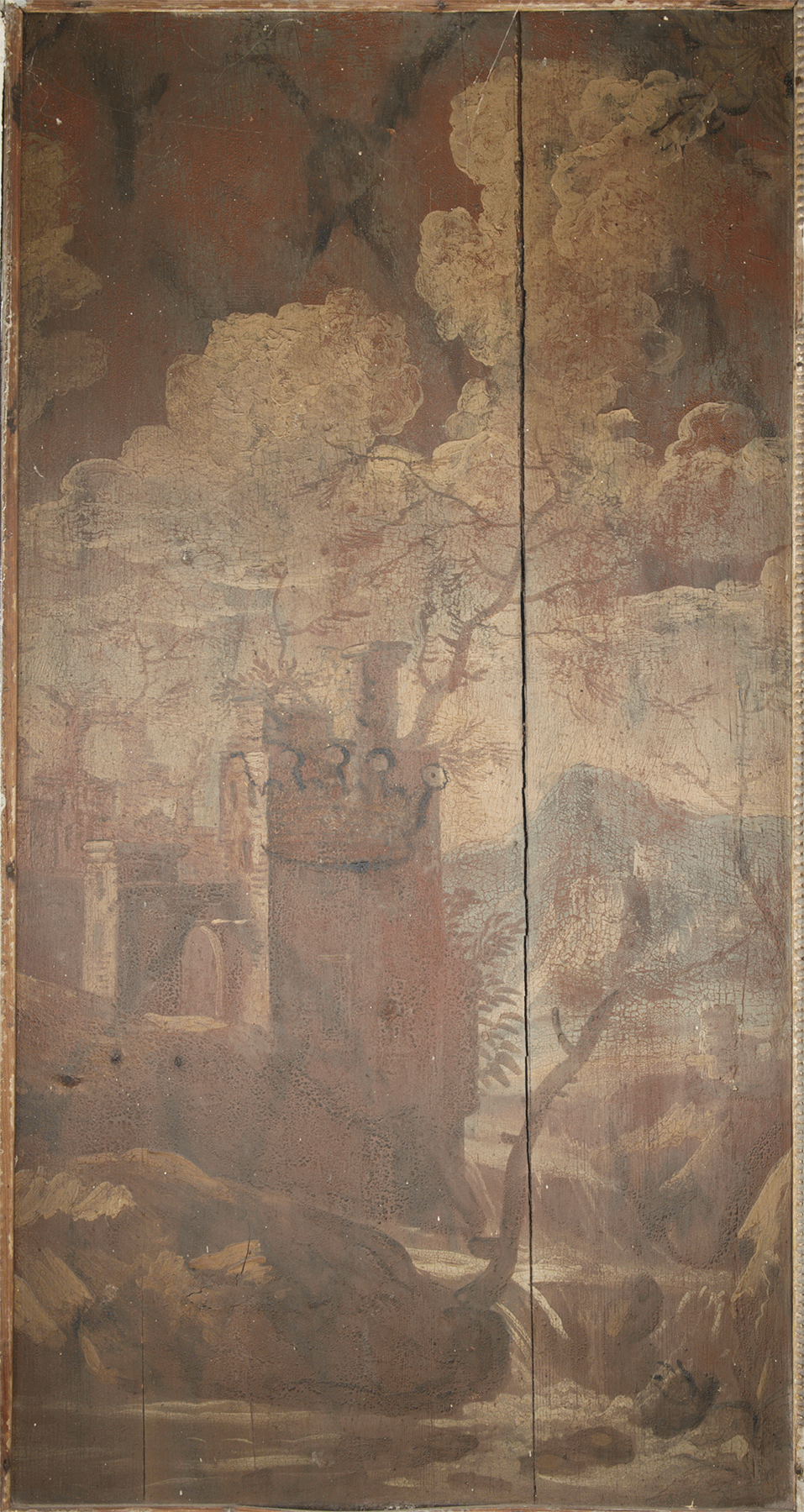Photographing the unseen
In the middle of the panels we could faintly see a lion on top of a crown, and a floral decoration in each corner. As we wanted to see these drawings more clearly, we tried using a specific photography technique that allowed us to see what’s behind the paint: infrared photography.
A digital camera is designed to record a little bit more than what our eyes can see. But when we’re talking about light, human vision is able to perceive just a small part of the whole electromagnetic spectrum. Human vision can see between 400 nm and 800 nm; digital cameras can catch anything between 350 nm and 1,000 nm.
At each end of the visible spectrum we have the ‘invisible’ spectrum of ultraviolet light and infrared light, which can be recorded using specific photography techniques. Ultraviolet light was mentioned by our colleagues from Project Reveal Team West in their article about Vaseline glassware.
This article concentrates on the infrared spectrum. Infrared photography is commonly used by conservators to study underlying drawings in paintings. When we see colours, the brain analyses the way that surrounding light is being reflected on the surface of an object. The object’s composition affects how it reflects light, creating what the human brain deciphers as colours.
As infrared has a longer wavelength than visible light, it can reach different levels in various materials. Some materials that are opaque in visible light, such as paints and oils, become transparent under infrared light. Carbon black, graphite and coal drawings react particularly well to infrared photography as they absorb infrared radiation.
A closer look at the other panels in the room revealed that two more have the same decorative traces. They’re located above the door to the Vigne Room. Having photographed each panel, we compared the results and noticed that each lion and crown is different. The curators intend to research why this is the case – maybe they were deliberately designed to be different, or maybe they were drawn by different artists.
Below is an image from the very top panel to the right of the window, which shows some intriguing patterns at the top. We’re not sure of their significance or why they’re there. The infrared camera revealed that the pattern in fact covers the whole panel.

This specific photography technique is another example of how photographers can assist conservators, researchers and curators in their work to trace, document and show our collections’ wonderful history.
Project Reveal is a Trust-wide collections digitisation project. It will result in an updated database with high-quality images and unique object numbers for every item in the National Trust for Scotland material culture collections. Six regionally based project teams, supported by experienced project managers, will work across all our properties with collections to complete the inventory in 24 months from July 2017 until July 2019.
Stay in touch
Be the first to hear about our latest news, get inspiration for great days out and learn about the work we do for the love of Scotland.